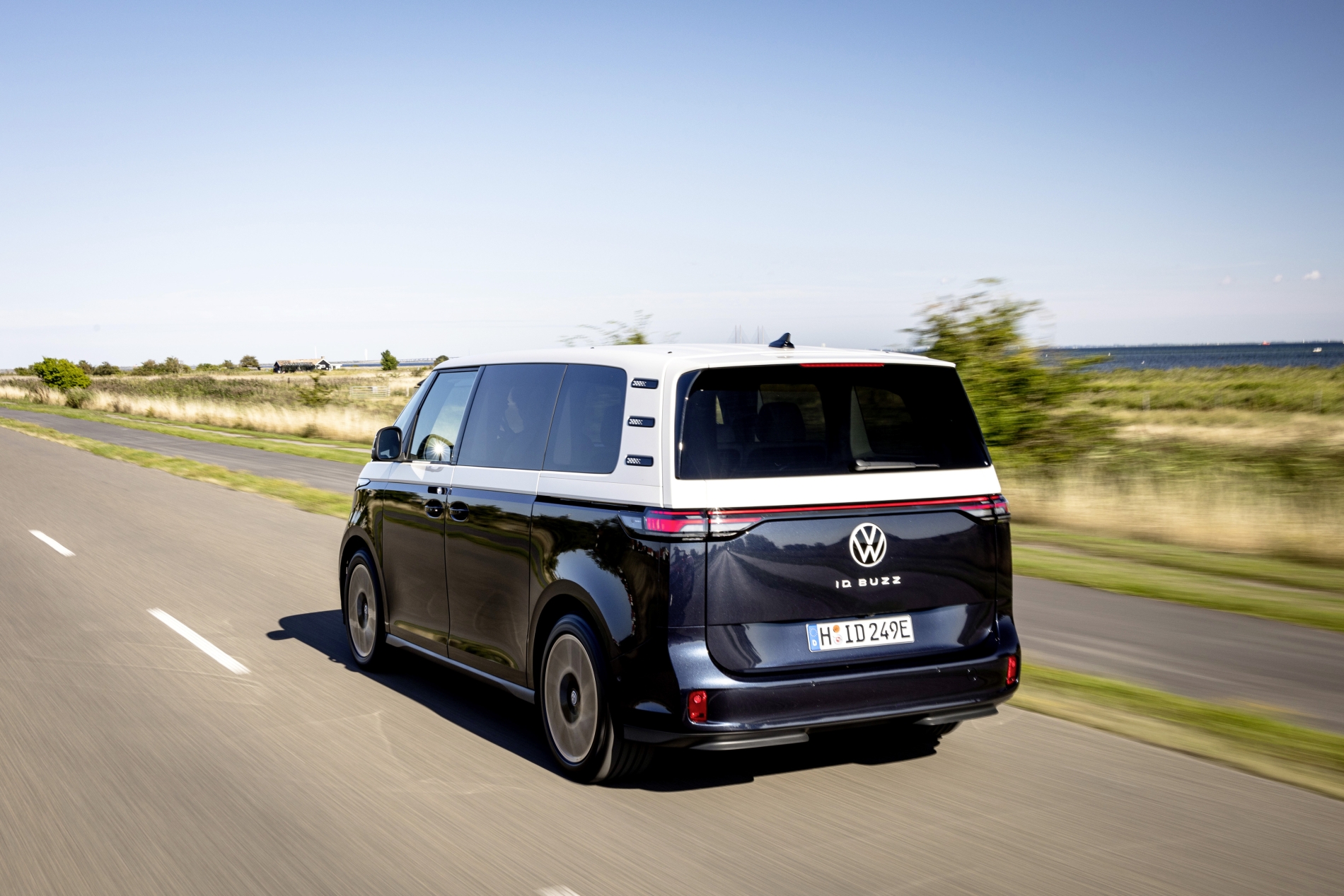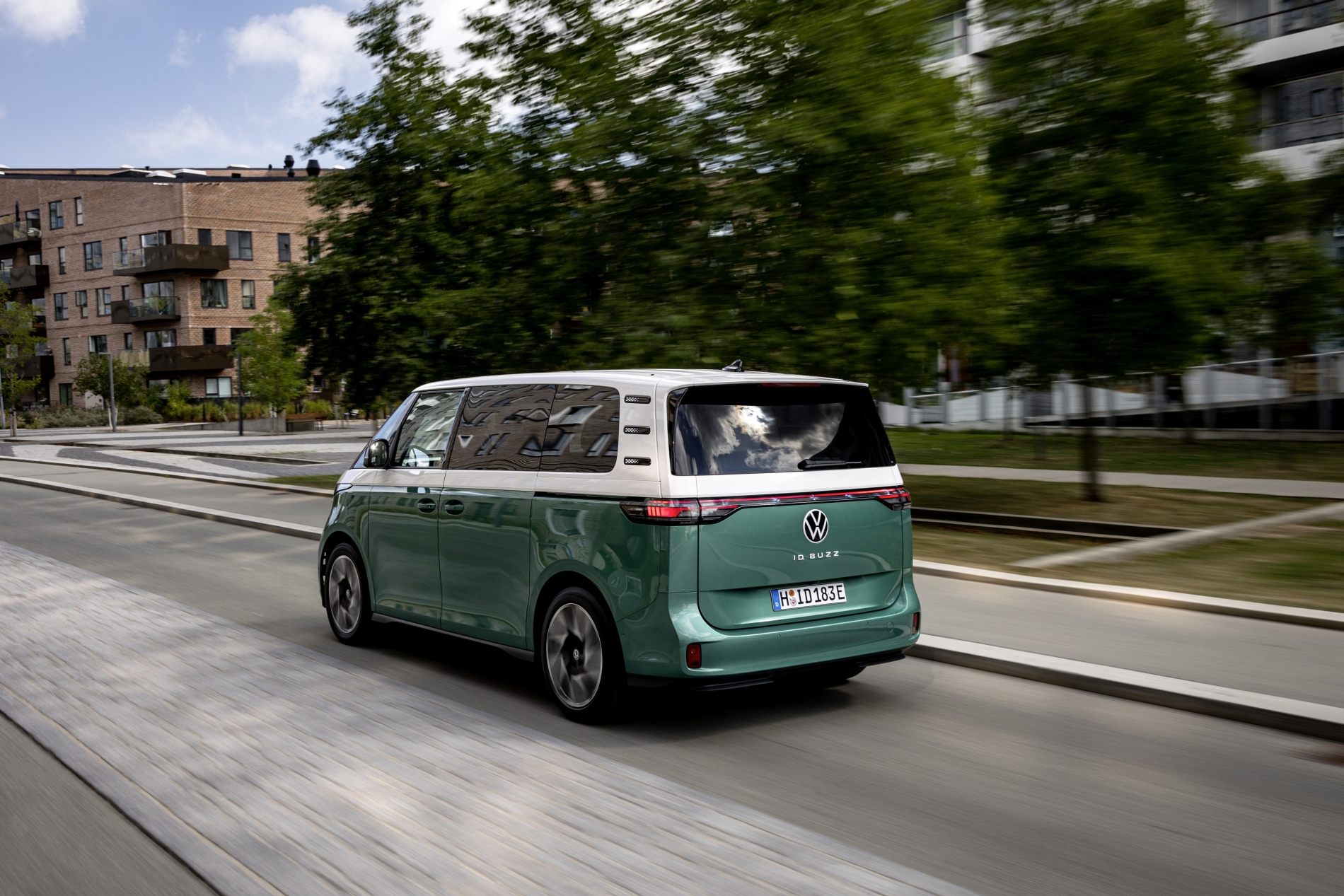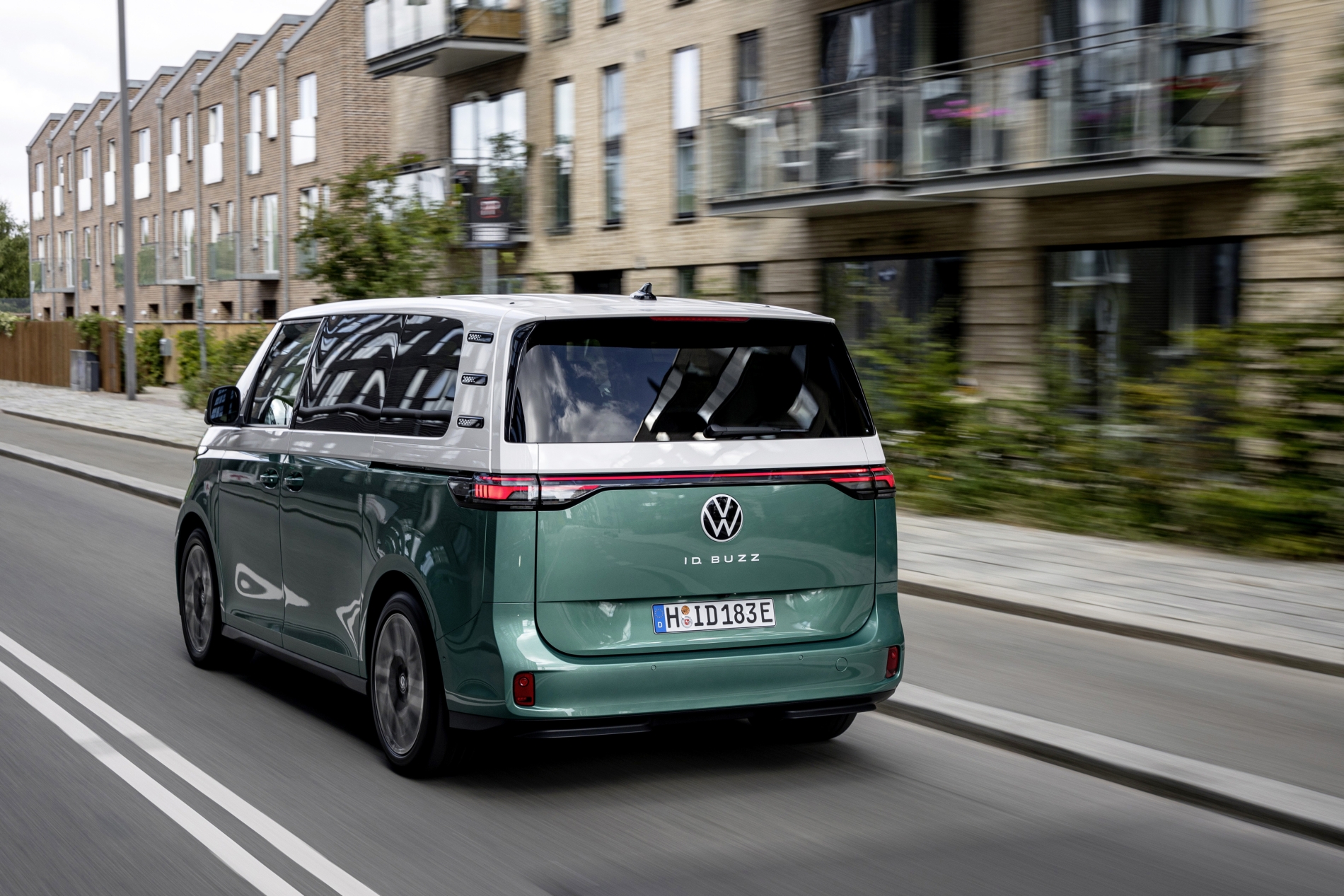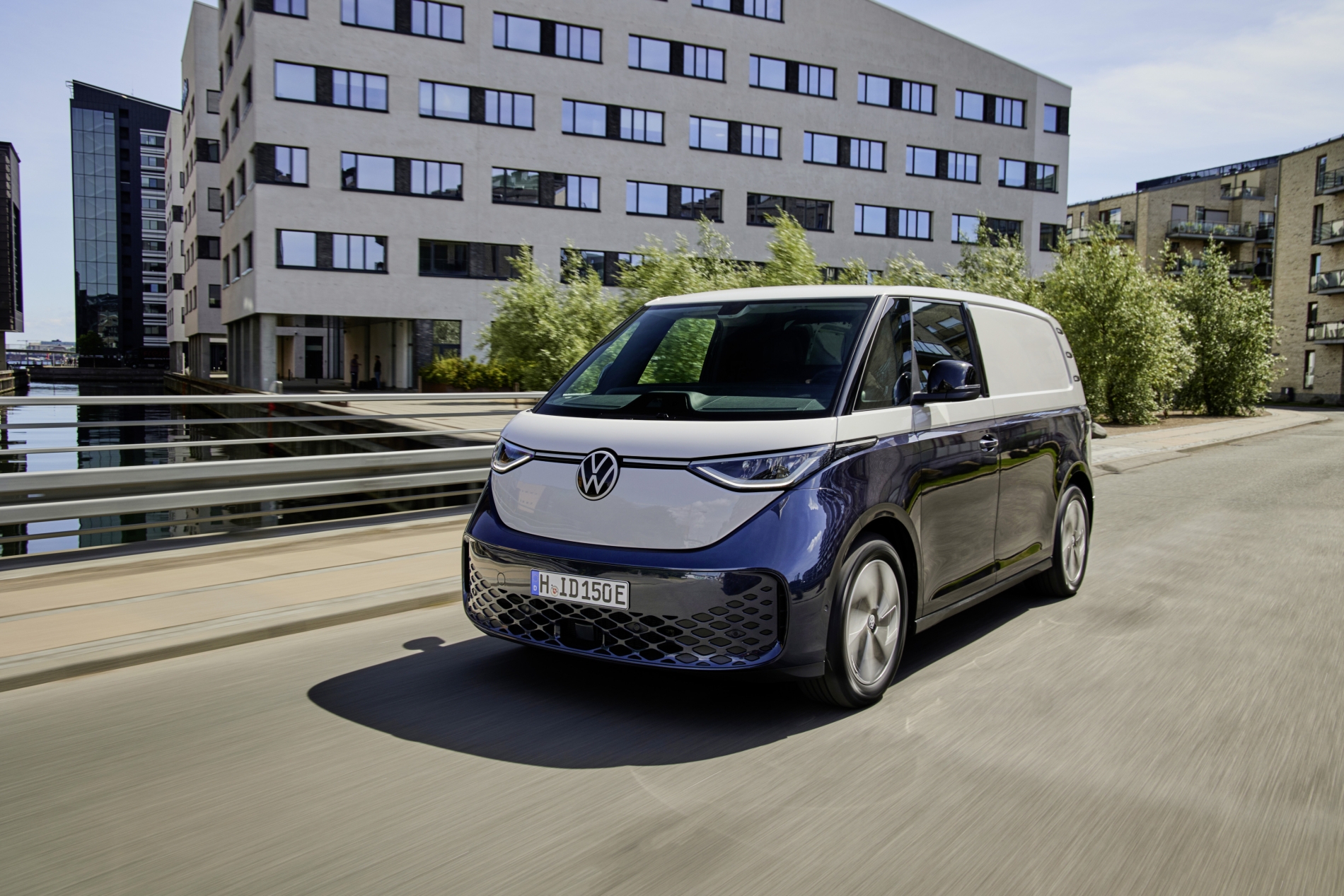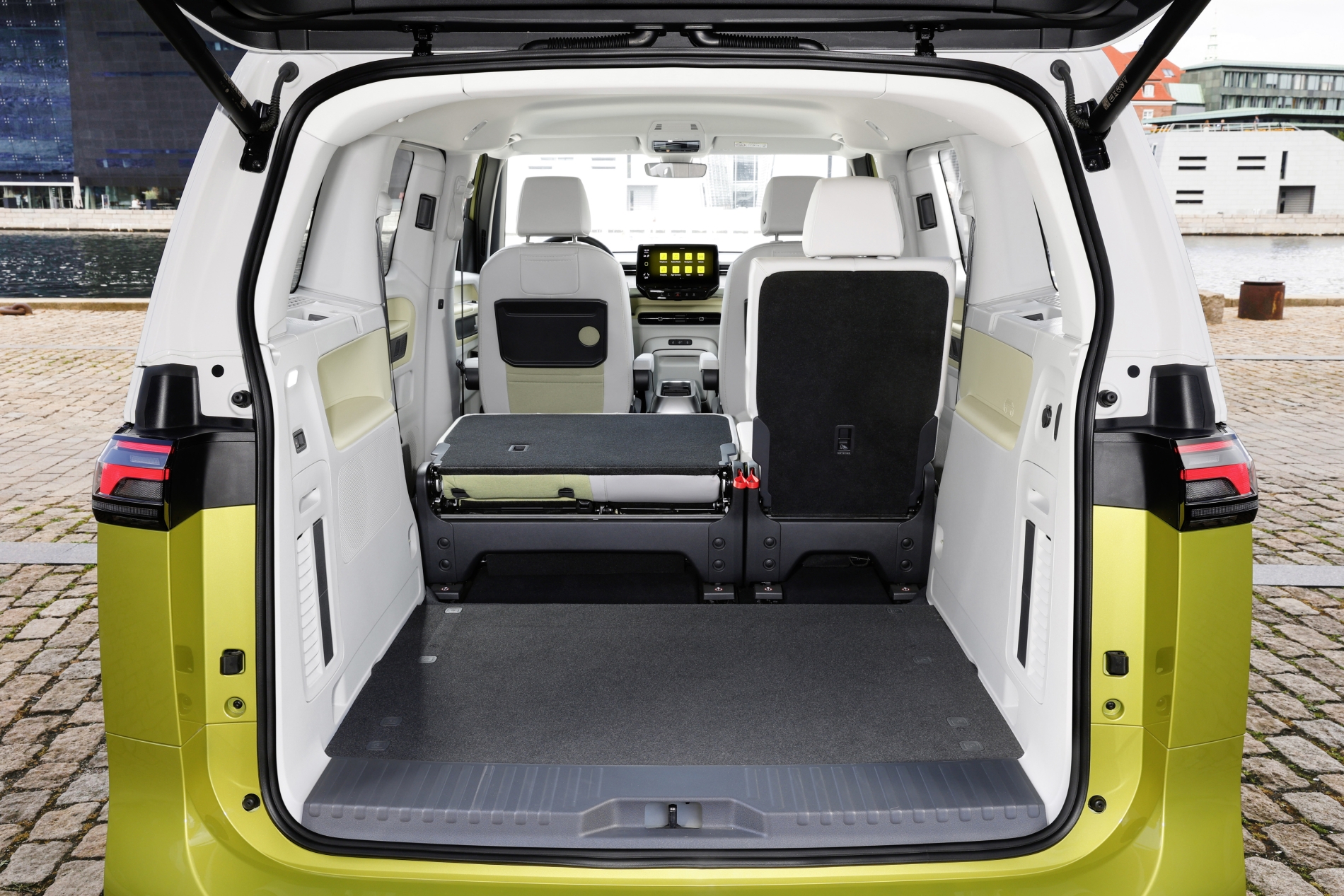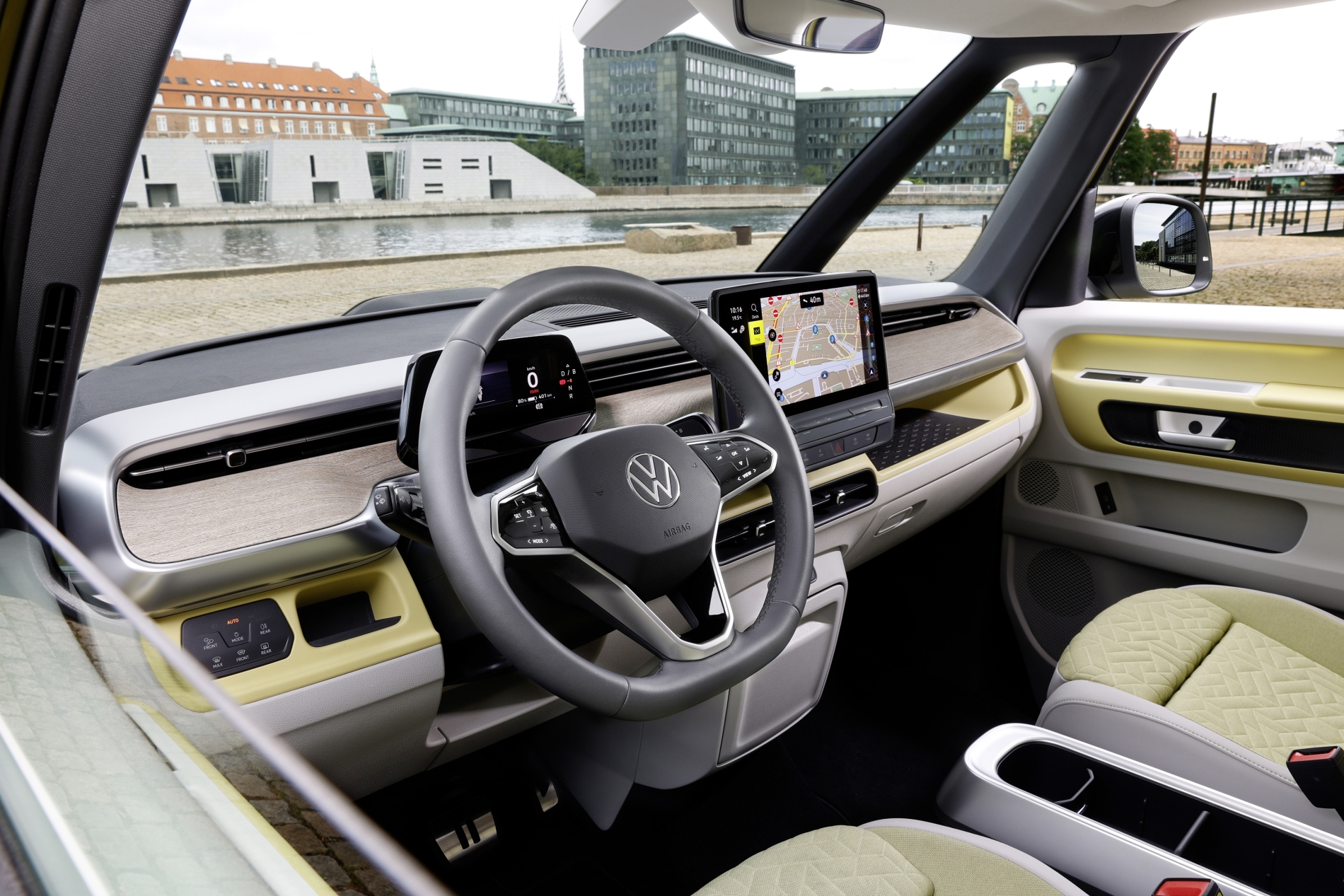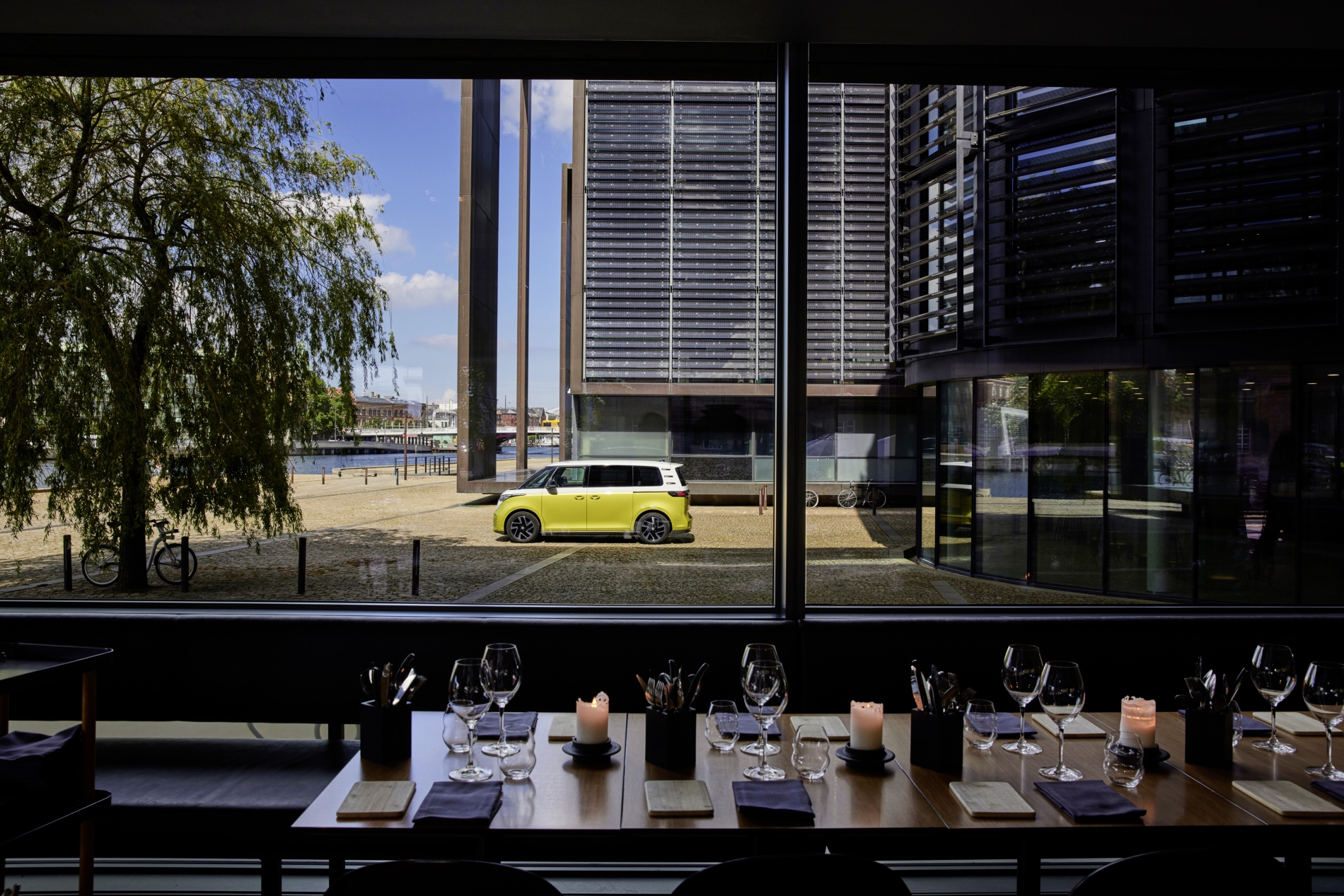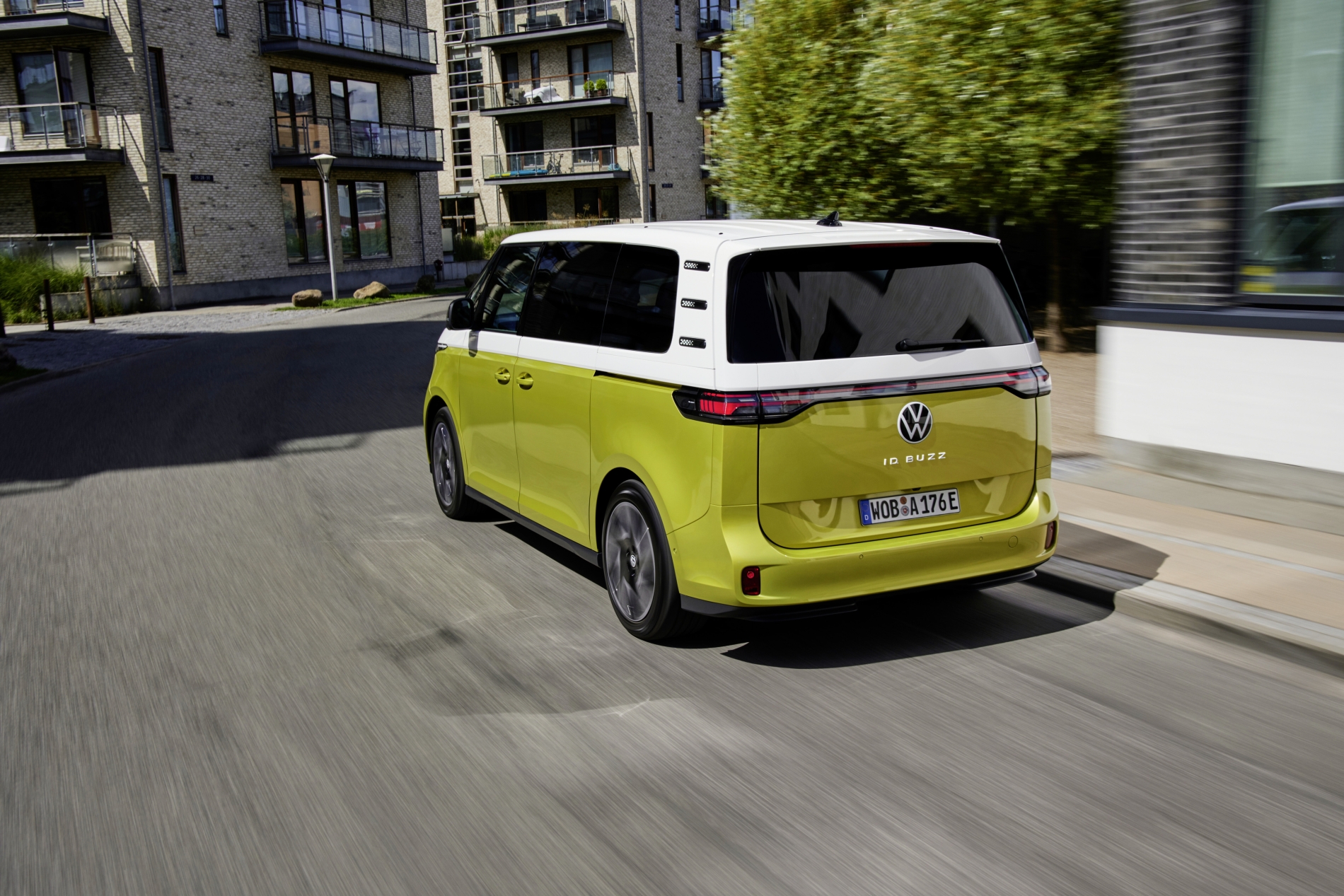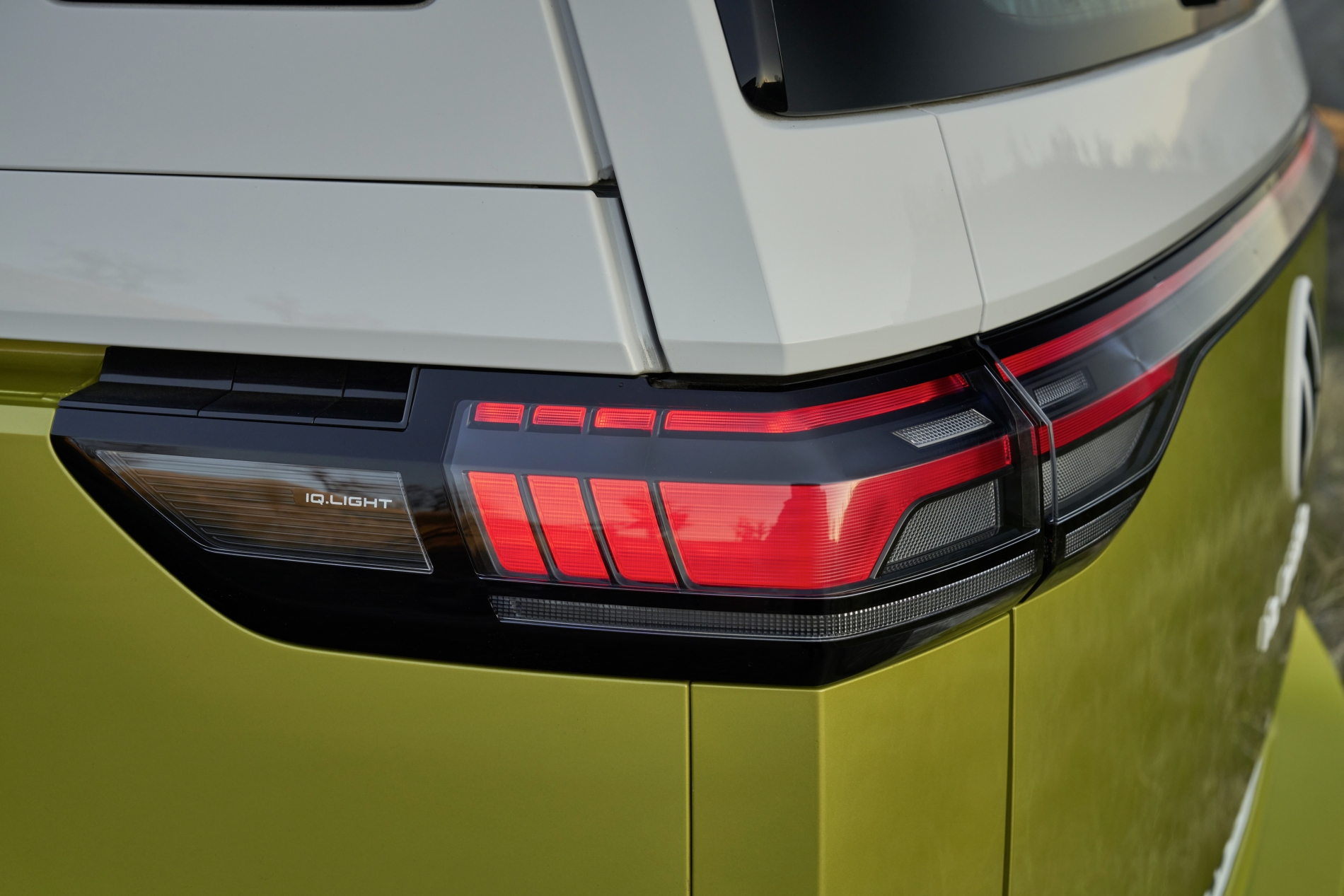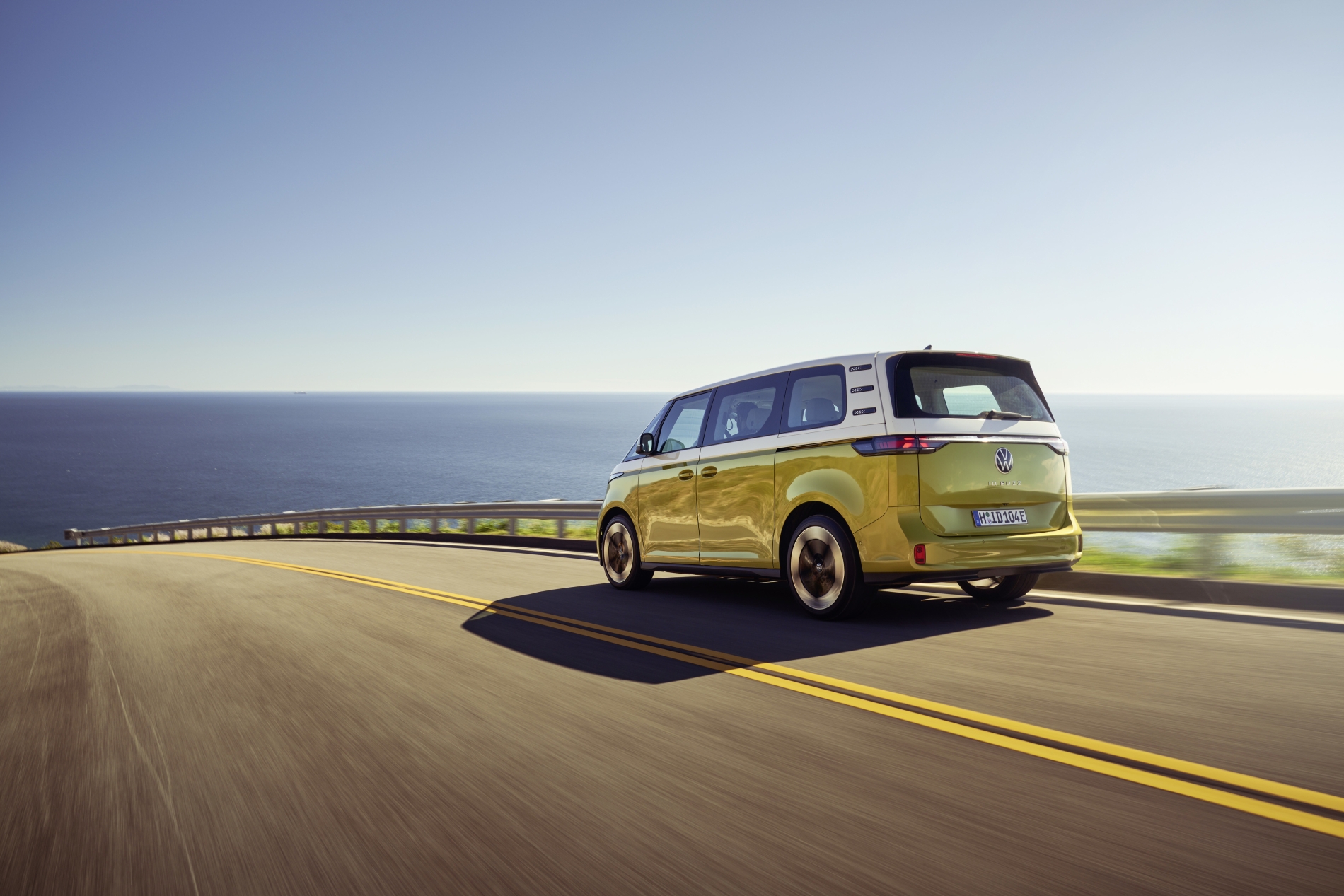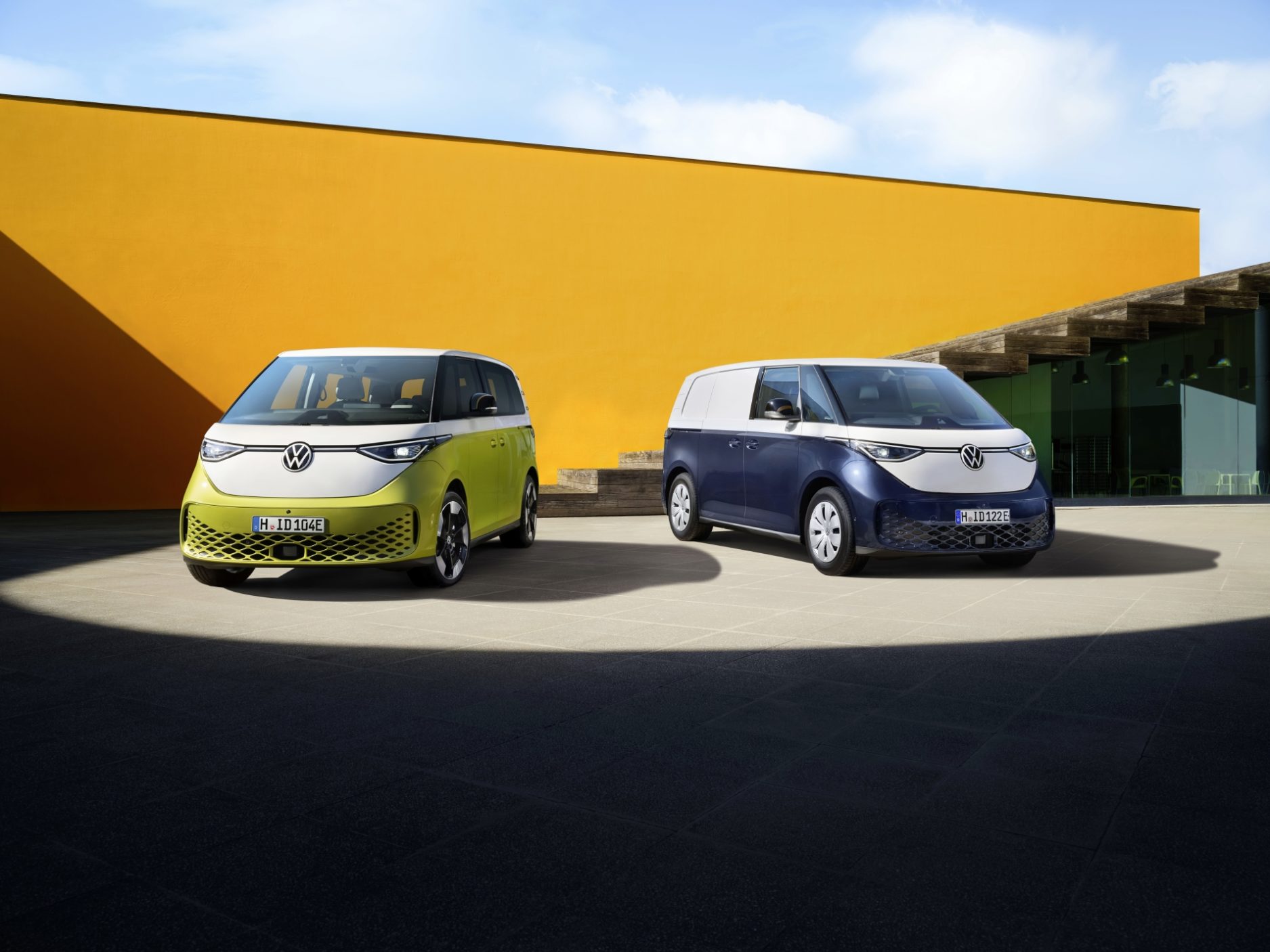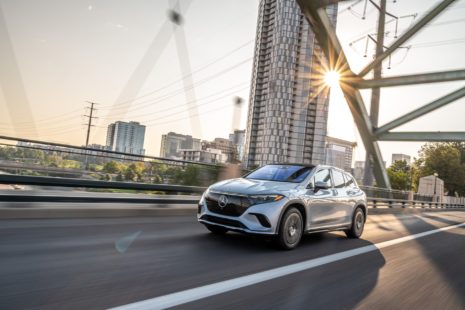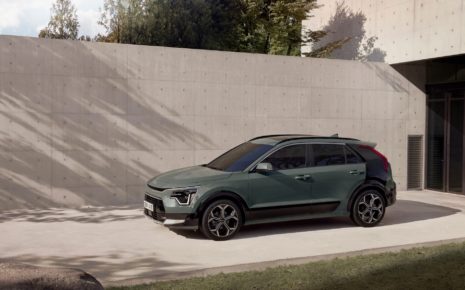Test drive - Volkswagen ID. Buzz
The design of the ID. Buzz was inspired by the legendary Volkswagen hippy bus, so there are hints of the old model’s styling in the exterior, which also make the car attractive and unique. ID. Buzzi’s large saloon is spacious and roomy. The model is equipped with state-of-the-art technology, including a fully digital dashboard and multimedia system. In addition, a host of modern safety features, such as automatic emergency braking, active lane-keeping and a reversing camera, are on board to ensure a safe and hassle-free drive. ID. Buzz moves using electricity only. It has a driving range of up to 420 km on a single charge, making it a good vehicle for longer journeys or for getting around town.
| Length | 4712 mm | Total weight | 3000 kg | |
| Width | 1985 mm | Unladen weight | 2471 kg | |
| Height | 1951 mm | Permissible mass of trailer with brakes | 1000 kg | |
| Wheelbase | 2989 mm | Mass of trailer without brakes | 750 kg | |
| Luggage compartment capacity | 1121 – 3900 litres | Driving range on the road | 402 km | |
| Urban range | 423 km | |||
| Engines | 1 | |||
| Engine power | 150 kW | Gearbox | Automatic | |
| Fuel | Electricity | Number of gears | 1 | |
| Fuel consumption | 20,5 – 21,7 kWh/100 km | Transport scheme | Reverse |
The birth of the ID. Buzz owes much to the former Volkswagen Type 2, also known as the Volkswagen Bus or Combi. It was a legendary vehicle, first introduced in 1949. The Type 2 was created following the huge success of the Volkswagen Type 1, or Beetle, and incorporated many of the Beetle’s technical solutions.
The Type 2 was also designed to carry goods and was ideal for both commercial and family use. The vehicle’s modular design allowed it to be built in a variety of versions, including a van, minibus, box van and even a camper van with a tent. The Type 2 was particularly renowned for its high cab and push-button gearshift, which made driving comfortable and easy.
The history of the vehicle is very varied and it has been part of many important historical events. In 1960s hippie culture, the Combis became synonymous with freedom and adventure, as its spacious interior was well suited to travel and a wide range of experiences.
Type 2 was popular all over the world and was used in many places, for example as taxis or school buses. In addition, the Type 2 was an important vehicle in the history of social movements and organisations, such as the Woodstock Festival of the 1960s or the AIDS awareness campaigns of the 1980s.
The vehicle’s development history has been long and uninterrupted, and it has undergone a number of modifications, including improvements to both the engine and gearbox. Most recently, Volkswagen decided to stop assembling the Type 2 in Brazil only in 2013, where it had been produced since the 1950s. However, the Type 2 has remained a true classic, it still has a large fan club and can still be seen on the streets all over the world.
In fact, Volkswagen has been flirting with the new Type 2 for several decades. The Microbus concept car was shown at the Frankfurt Motor Show in 2001 and Bulli, which looks more like the ID. Buzz, was unveiled 10 years later in Geneva. Neither went into production, but apparently it was decided to reincarnate the model in the context of electrification. Perhaps the Multivan was considered too big to convert to electric. We will see what happens to both models in a few years time.
The body of the ID. Buzz is streamlined and smooth, with no large corners or harsh lines. The front end features modern, elongated LED headlamps and a bar with diamond-shaped holes of varying sizes, giving the retro car a fiercely modern futuristic look.
ID. Buzz’s large wheels and tyres create a stylish and unique look. The curved roof lines and large windows make the cabin more spacious and light-filled. At the rear, we also see a long headlight bar and a large Volkswagen logo, which together make a simple, elegant and stylish impression.
ID. Buzz customers will be offered a range of single and dual-colour combinations, making it easier for shoppers to find the option that suits them best, as well as making the cars themselves more visible on the street.
No less interesting is the interior of the new Volkswagen – modern, spacious and functional, with lots of stylish details and innovative technologies. The cabin is spacious and bright. Interestingly, however, there is no glass roof in the range.
When you get in the car, you immediately notice the windscreen with its large slope and the giant smooth dashboard top it leaves behind. I myself have always looked at cars with the view that if you need to put something away immediately when you get in, the most logical thing to do is to put it in front of you. Most cars, however, don’t have a large horizontal surface. ID. Buzz has and in addition, the floor between the front passengers is smooth.
The vehicle’s minimalist and simple dashboard makes an ascetic impression, but at the same time is modern and elegant. It includes a touchscreen that allows the driver to control various functions of the car, including air conditioning, navigation and sound. In addition, the dashboard is covered in a soft-touch material, which makes the interior of the car cosy and comfortable.
The ID. Buzzi’s comfortable seats offer plenty of space for the driver and all other passengers. The passenger compartment is covered with high quality finishing materials, many of which are recycled. All of these are tastefully blended together to add elegance and luxury to the interior.
The multimedia system’s touchscreen allows the driver to control a variety of functions such as air conditioning, sound and navigation. In addition, it is compatible with various smart devices. ID. Buzz is equipped with many of the safety features offered by Volkswagen, such as adaptive cruise control, lane-keeping assist and emergency response.
Pay particular attention to the luggage compartment, where a great deal of emphasis is placed on stowing various items. There are all kinds of boxes and movable barriers to prevent things from moving around on their own.
The vehicle’s electric powertrain offers a smooth and quiet ride. The model is currently only offered in 204 horsepower and rear-wheel drive. It needs 10.2 seconds to accelerate to 100 km/h, and the top speed remains at 145 km/h. The rear wheelbase reaches 11.09 metres. The vehicle’s electric motor ensures a smooth and quiet ride. A full charge of the battery pack from the home mains takes 7.5 hours, while a fast charge of 5 to 80 percent can be achieved in half an hour. The battery pack is said to have a capacity of 82 kWh, of which 77 can be used efficiently.
Car prices start at just over €66 000 + loads of extras to make it all fit and manageable.
For fans of minivans, ID. Buzz will undoubtedly provide a very positive experience. Praise to Volkswagen for not coming up with yet another SUV, but also for feeding a segment that seems to be completely forgotten these days. At the same time the price of the ID. Buzz starts where the larger and also very driveable T7 Multivan, launched only a year earlier, ends. It remains to be seen which of these will become more popular on the market.




















































